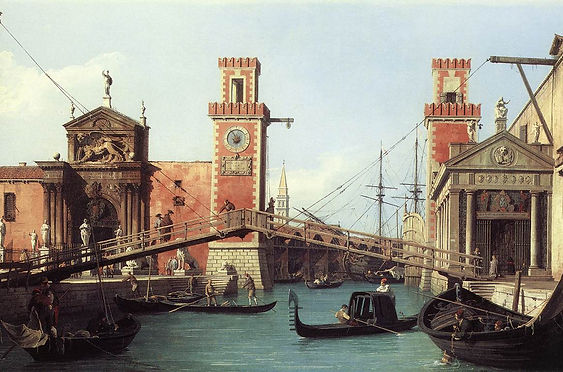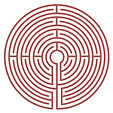


IL CANTAR MODERNO
Venetian and Neapolitan songs of the 15th Century
The secular repertory of Italian music in the 15th Century known today consists entirely of some dozens of canti It is surprising to note that in the manuscript codices from the 15th Century musical examples with Italian texts are rare, compared to the very many examples of Franco / Flemish production. It is all the more surprising to note that the period of intense creativity for polyphonic music in the 14th Century and in the 16th Century, which was so productive in the field of music publishing, are separated by an almost ”mute” 15th Century. In the 16th Century, in fact, thanks to the flourishing trade in music printing, madrigals and motets spread more easily thoughout Europe. In the words of Nino Pirrotta, the 15th Century is defined as a break between the island of the Italian Ars Nova and the immense continent of 16th Century Italian music.
Analysis of secular texts found in the music manuscripts of the 15th Century is perhaps equivalent to unveiling the secret of the century. From the beginning of the century and throughout the peninsular, a new literary style appeared, close to the popular lyricism, imitating its language, its forms and its themes. The spread of this new literary genre was assured by the poets who were inspired by the most popular metrical forms: the strambotto, the barzelletta or the ballata. It is also true that, at the heart of the humanist literary culture, an authentic, ‘popular current’ was born and expanded throughout the peninsular; Leonardo Giustiniani in Venice, Lorenzo the Magnificent, Luigi Pulci and Angelo Poliziano in Florence, Cariteo (Benedetto Gareth) and Francesco Galeota in Naples, Serafino Cimelli (the Aquilano) in Aquila. Often two aspects co-existed in the same work; the erudite style and the imitation of forms in the popular tradition. Such is the case with Poliziano who named his poetry in the popular style rispetti, consisting of eight rhyming lines in dialogue form.
Already by the 14th Century it was common for a poet to send his verses to a musician to set them to music. Dante Alighieri delivered to his friend Lippo the canzona "0 mio servento core", accompanied by a sonnet, asking him to clothe them in music, so that they may be known wherever one wishes.
The musical arrangements served the function of amplifiers, broadcasting the poetry to a larger and less exclusive public; sometimes it is even impossible to retrieve the original version of the poetic text from the dialect variants and the setting. Moreover, although the popular language no longer permits the discovery of the verse as written by the poet, one notes at the same time that his way of feeling things and translating his sentiments, is the same as that of the people. In taking over the rhymes of Giustiniani - as d’Ancona fairly says in "Popular Italian Poetry" - the people recapture his worth and, by changing and modifying them in various ways, put their stamp on them, as they always will in the art forms which suit them.
From the more specifically musical point of view it is possible to distinguish three fundamental styles in 15th Century polyphony.
- The first is characterised by the important fioriture in the part of the Superius (the highest voice), contrasted with the more linear accompaniment of the other voices (generally three). In this part of the repertory, the polyphonic tradition of the 14th Century is still detectible, thanks to the melodic form and to the models which were retained.
- The second indentifiable style is that of the song written in the manner typical of the transalpine composers, Obrecht, Brumel, Compere, Isaac and Iosquin, but with a tendency to make the imitations between the voices less marked, giving them all equal importance.
- The third is the homorhythmic and homophonic style, mixing verses from the strambotto, of the veniziane and of barzelletta. It is this style about which little is known, in the almost complete absence of written sources; in fact a song is very often performed to an improvised accompaniment ad cytharam, ad violam or ad lyram. This method was nearly always used, as is shown from the iconography and in the many literary references. Prints show that musicians rarely used written scores in their concerts. The result is that, unfortunately, not a single note has come down to us of those masters who were the most famous in the literature and the chronicles of the 15th Century. It is from this that we know that Giustiniani was not only a poet, but also an experienced lutenist, and that Pietrobono dal Chitarrino, a musician at the Estonian court, was praised by Pisanello for his great skill.
The sung poetry of the 15th Century seems to have avoided the limitations of written notation intentionally, and to have relied completely on the inspiration of the performer, much to the loss of posterity. Possibly this hypothesis solves the mystery surrounding Italian music of the century of Leonardo da Vinci, an age which appears to us like a world opaque to our eyes, but which was actually full of light, life and sounds, the sounds of unwritten music.
Roberto Festa
Translation by Christopher S. Cartwright